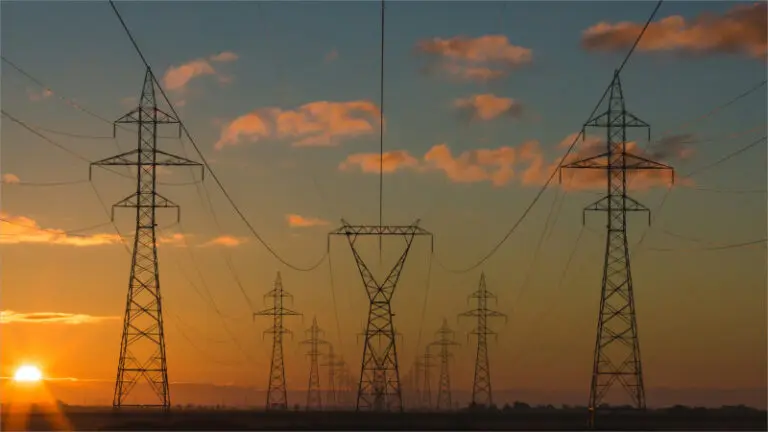WHAT YOU MUST KNOW ABOUT ENERGY DEMAND IN INDIA?
India is already the second largest consumer of electricity in the world after China. Here is the big opportunity matrix for the Indian energy sector.
- From consuming more primary electricity today than the US, its consumption will lag the US by 2050, as India gets closer to Net Zero. That entails huge investments in RE.
- The share of renewable energy (RE) in the total energy mix is just about 21% for India currently. This share is expected to go up to 64% by the year 2050, a big shift.
- Today, EVs and data centres account for 5% of total electricity consumption. This is expected to go up to a whopping 16% by the year 2030, again a big demand shift.
The moral of the story is that a thematic play on energy in India is all about playing this deep shift; both in the structure of demand and in the structure of supply.
FOUR THEMES THAT WILL DRIVE ENERGY NARRATIVE IN INDIA
Going ahead, the demand, pricing and the valuation assigned by the market to stocks will depend on how the following 4 themes are handled by companies.
- Energy will not just offer opportunities in supply, but in scores of associated industries like storage, batteries, transmission, EV supply chain, EV infrastructure etc.
- Success in the energy theme will depend on being proactive and innovative. Hence focus has to be on clean tech and a flexible model that is open to change at short notice.
- Sustainability will be capital intensive, calling for huge investments in data centres, infrastructure, green hydrogen, green ammonia, lithium-ion sourcing etc.
- The key to the future of this sector will be how companies catalyse and capitalize on policy reforms. For the government, energy reforms will be a major mandate.
While the theme is exciting, it is fraught with risk and has a high failure rate. Hence, a mutual fund SIP approach could be more rewarding when it comes to new energy.
WHAT ARE THE TAKEAWAYS FROM THE NIFTY ENERGY INDEX
Here are some key facts that emanate from a comparison of the Nifty Energy Index with the Nifty 50 and the Nifty 500.
- While Nifty 50 gave negative returns in 1 of the last 10 years and Nifty 500 in 2 out of last 10 years; Nifty Energy Index has given positive returns in each of the last 10 years.
- The Nifty Energy Index TRI has outperformed the Nifty 50 TRI and the Nifty 500 TRI in 6 out of the last 10 years.
- In the years when the Nifty Energy Index has outperformed, the average spread has been anywhere between 300 basis points and 1,600 basis points.
The past performance, combined with the future prospects, makes the Kotak Energy Opportunities Fund an interesting investment proposition.
GLANCE AT THE KOTAK ENERGY OPPORTUNITIES FUND NFO
Here are key details of the Kotak Energy Opportunities Fund NFO.
- The NFO opened on April 03, 2025 and closes on April 17, 2025. The allotment date for units will be within 15 days from the close of subscription of the NFO.
- On the risk-o-meter, Kotak Energy Opportunities Fund is classified as “Very High Risk Fund,” due to its predominant exposure to equities and concentration on a largely energy oriented portfolio.
- Investment objective is to generate long term wealth through a thematic exposure to the fast changing energy sector in India, with specific focus on segments of energy that are likely to drive alpha in the future.
- There is no exit load on redemptions up to 10% of holdings. For any redemption beyond 10% of holding, an exit load of 1% will be levied, if the fund is redeemed or switched within 1 year from the allotment date. Entry loads do not exist anyways.
- Kotak Energy Opportunities Fund offers Regular and Direct plans. Additionally, the fund also offers the Growth option and the IDCW option to investors.
- Minimum application amount in NFO will be ₹100 and in multiples of ₹1. This limit will apply to additional purchases and SIPs too. Harsha Upadhyaya, Mandar Pawar, and Abhishek Bisen are the designated fund managers.
- Being a thematic fund, this sector is exposed to sectoral cycles in the short to medium term. However, even in the long run, there is no guarantee of positive returns on the fund, as several internal and external factors come into play.
- Kotak Energy Opportunities Fund, is a pure equity fund. STCG tax (less than 1 year), will be taxed at 20.8% (including surcharge). LTCG tax (1 year or more), will be taxed at 12.5%, after maximum exemption of ₹1.25 Lakhs per financial year.
The Kotak Energy Opportunities Fund is an active thematic fund, positioned on the cutting edge of the shift happening in the Indian energy sector.


![]() IIFL Customer Care Number
IIFL Customer Care Number ![]() IIFL Capital Services Support WhatsApp Number
IIFL Capital Services Support WhatsApp Number